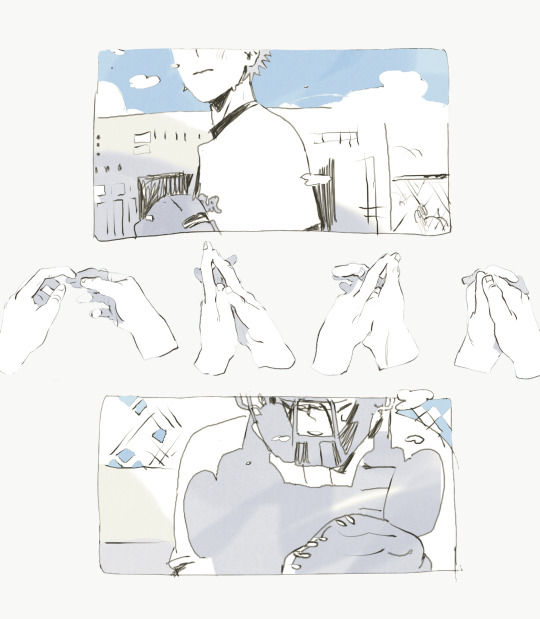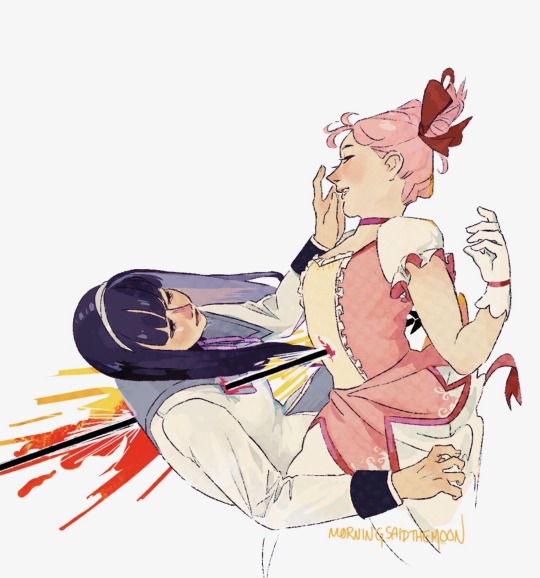a dungeon meshi (+others) sideblog. the normal dni's apply, but pro-ships and terfs are especially not welcome. 20+ / east asian / she/her
Don't wanna be here? Send us removal request.
Text

help, i love this new dunmeshi extra
14K notes
·
View notes
Text
spotify is raising prices again here's the apk that gives you premium for free
222K notes
·
View notes
Text
I'm not like a Little Monster or anything but I will always have some fondness for Lady Gaga for giving the single greatest response to someone asking her to enforce transmisogyny by holding her cisness hostage (by asking if she has a penis a.k.a if she's a tranny) : "Would it be so terrible?" A bisexual woman earnestly putting a mirror up to the cis gay man who thrives in respectability politics interviewing her, showing him the simple kindness that he lacks towards trans women thanks to society's transmisogyny. Why should it be an insult? Why are we treating this question as a threat to a woman's value? Stephanie refused to engage, pure and simple, even if it shocked people that she didn't protect herself by upholding transmisogyny and I think that's one of the best things a cis woman can say to truly counter transmisogyny.
#it's crazy bc i thought lady gaga was trans up until i was fifteen simply because my mom told me she was#i guess she got it from that interview#anyways queen behavior#text
31K notes
·
View notes
Text
haikyuu characters formality guide
in general: speaking formally will change the pattern of your words and insert extra articles at the end of sentences. if you're older, you can address your juniors by either their first or last name (first is usually more intimate though; see oikawa calling hinata "shouyou") and you don't have to use formal speech patterns. of course, if you're the same age you don't have to do so either.
generally assume that everyone keeps to a standard level of formality with their seniors and will, most often than not, call seniors by their last names + san
karasuno
hinata: obviously formal to his seniors (except kenma), but pretty relaxed about calling them by their first names or nicknames (e.g. noya-san, asahi-san, daichi-san)
kageyama: formal and does not deviate. calls his seniors by their full last names (even atsumu and osamu, who other characters usually differentiate by calling them by their first names, or sawamura, whom most others call daichi-san). he calls kiyoko shimizu-senpai, even though most others will say kiyoko-san (like noya and tanaka). the unusual part is that he calls his grandfather by his first name + san. miwa refers to him as kazuyo-kun, which is definitely weird. they've got an interesting family dynamic
tsukishima: formal. but also very snarky. he also calls his seniors by their full last names
yamaguchi: formal, same as tsukishima but much more polite
yachi: overly formal at times to the extent that she slips into ceremonial speech pattersn, but this is played for humor and is symptomatic of her overly anxious personality
tanaka: formal, but will call kiyoko-san by her first name
noya: same as above, except 1) when he fought asahi in s1, he didn't use formal language at all, and 2) he calls yaku "morisuke-kun." seems like nekoma third years are pretty casual! plus nishinoya tends to use people's first names for people he's close with (e.g. shouyou, ryuu, chikara).
everyone else
kenma: he explicitly doesn't like the hierarchical system. he calls kuroo by a nickname and doesn't speak formally to him at all. interestingly, he also doesn't speak formally to kai or yaku, and refers to them as kai-kun and yaku-kun. this is pretty unusual but it goes to show how accepting others are of his quirk (or that he's just really close to the 3rd years)
atsumu: formal with the third years, but not formal with aran, whom he calls aran-kun. this makes sense because they're childhood friends. post-timeskip, he interestingly refers to bokuto as bokkun, which is pretty informal, and as far as i remember he doesn't speak to him formally. also, he likes to call everyone by their first names + kun, which i guess is to be expected seeing as almost everyone calls him and osamu by their first names.
sakusa: his speech patterns is one of my favs bc it's all over the place. he's polite to his seniors and post-timeskip will use formal language with bokuto and call him bokuto-san, but then why the hell is he speaking so informally to ushiwaka? it's not even like they're longtime friends? he calls him wakatoshi-kun and doesn't use formal speech patterns with him at all. shocking.
that's about it for now i think
#haikyuu!!#haikyuu meta#hinata shouyou#kageyama tobio#tsukishima kei#yamaguchi tadashi#yachi hitoka#tanaka ryuunosuke#nishinoya yuu#kozume kenma#miya atsumu#sakusa kiyoomi#i was bored and thinking about how people interact with each other in hq so i wrote this#reference#japanese#hq!!#haikyuu
162 notes
·
View notes
Text
11K notes
·
View notes
Text
reading chapter 91 of dungeon meshi almost made me vegan holy christ
13 notes
·
View notes
Text
you know honestly i find oda's ability to draw the strawhats hanging out with such . idk how to put it. warmth . sooo ridiculously insane. you know? like pretty much every colorspread he does with them are just so fun and happy and just radiate joy i dont know how to describe it just look

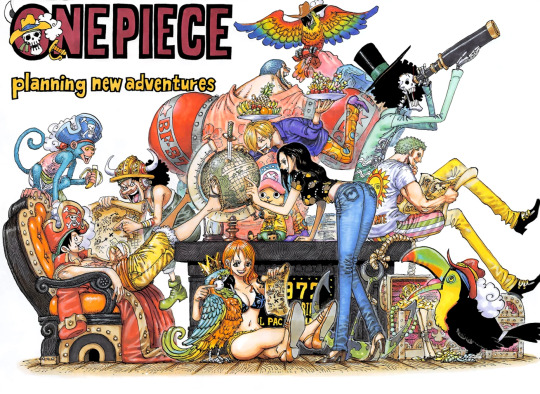




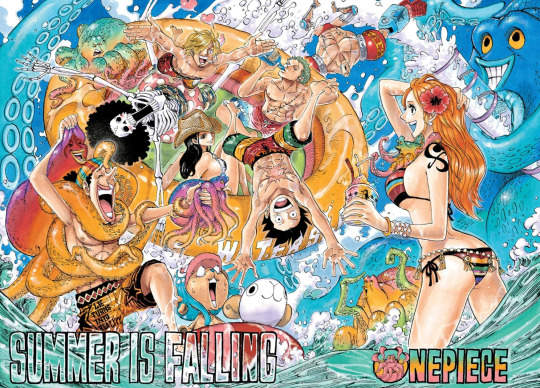
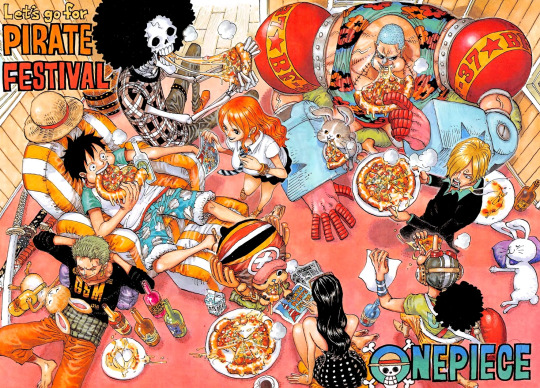


5K notes
·
View notes
Text
Hi here’s another list of things I’ve read that are really important to me, on the loose theme of ‘fantasy urbanism.’ I still haven’t read Dhalgren.
Invisible Cities by Italo Calvino. This is the most essential thing to read if you are even tangentially interested in anything about this list i think. Revelatory to me as a pulpy-literalistic fantasist.
Imaginary Cities by Darran Anderson. Inspired by the Calvino book, an enormous overview of planned or dreamed cities that were never built.
Kalpa Imperial by Angélica Gorodischer. Some of my favorite secondary-world fiction I have ever read. Short stories from the history of an empire at the ludicrous extreme of size, depth, history. The English edition was translated by Ursula K. Le Guin who is my favorite.
A Stranger in Olondria by Sofia Samatar. Beautiful book and deals with an invented setting and urban spaces with a more densely intellectual approach than I have ever seen.
Delirious New York by Rem Koolhaas. An architectural history and “retroactive manifesto” for Manhattan, but some of the most interesting bits are about Coney Island in particular. Huge futuristic conflicts underlie every modern city.
The City & the City by China Miéville. This isn’t a lot of people’s favorites of his because its fantastic elements aren’t the loudest, but it’s so smart and bewildering and develops an allegory for emergent social strata in urban spaces that is really compelling.
The Event Factory by Renee Gladman. Just finished this; it feels loose and dreamlike and engages very clearly with real feelings of exploring new spaces, radically repurposing urban environments…
Country of Ghosts by Margaret Killjoy. Not as totally concerned with cities as the rest of the list, but a really exciting and unusual example of worldbuilding from an intentionally political/utopian perspective.
Surregional Explorations by Max Cafard. The first few essays in this book deal with Surrealist and Situationist approaches to urban space and the unconscious of cities; it’s a weird jumbled book but I liked it
7K notes
·
View notes
Text
i like to pretend i already died and asked god to send me back to earth so i can swim in lakes again and see mountains and get my heart broken and love my friends and cry so hard in the bathroom and go grocery shopping 1,000 more times. and that i promised i would never forget the miracle of being here
175K notes
·
View notes



